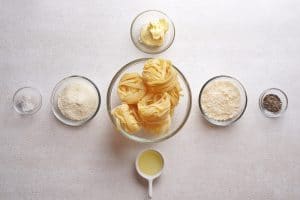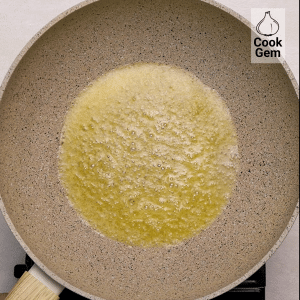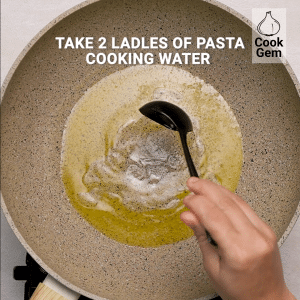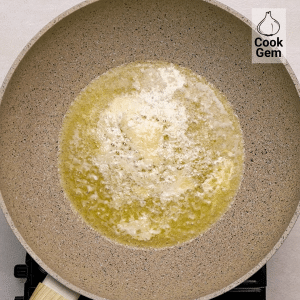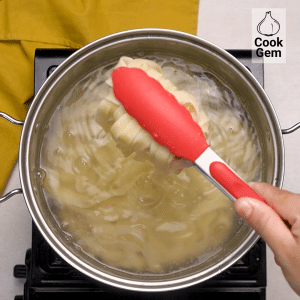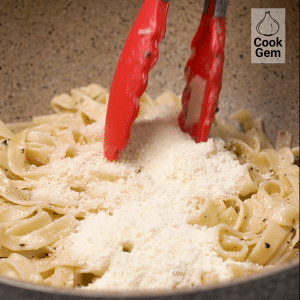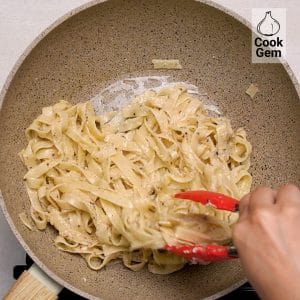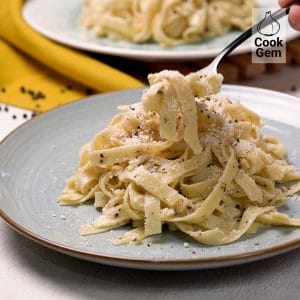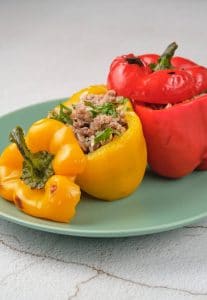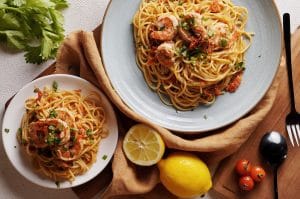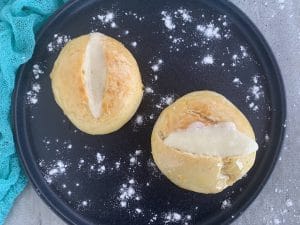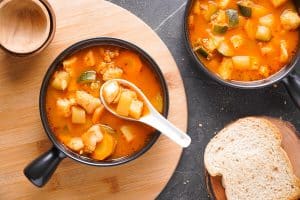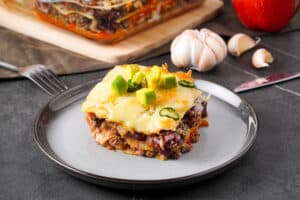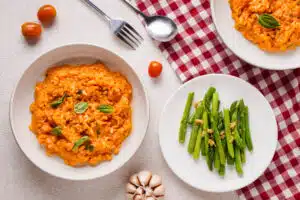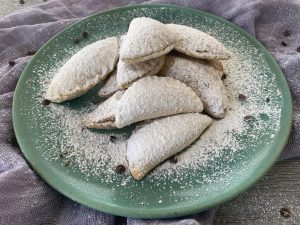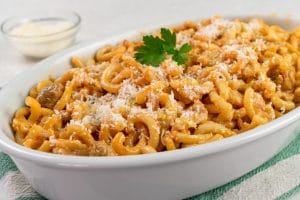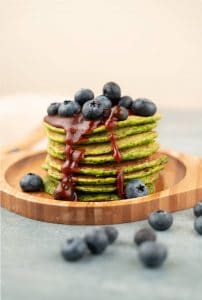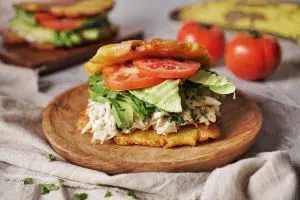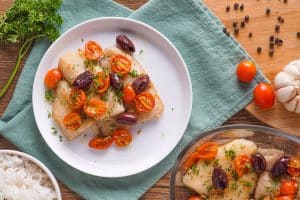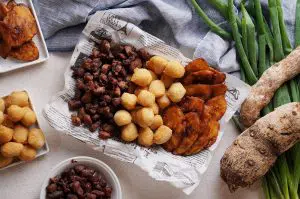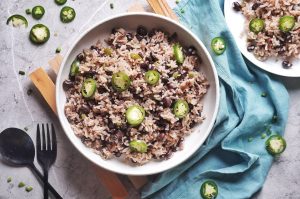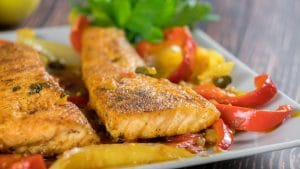Best Bavette Cacio e Pepe
Important Note: When you buy through our links, we may earn a commission. As an Amazon Associate we earn from qualifying purchases. Content, pricing, offers and availability are subject to change at any time - more info.
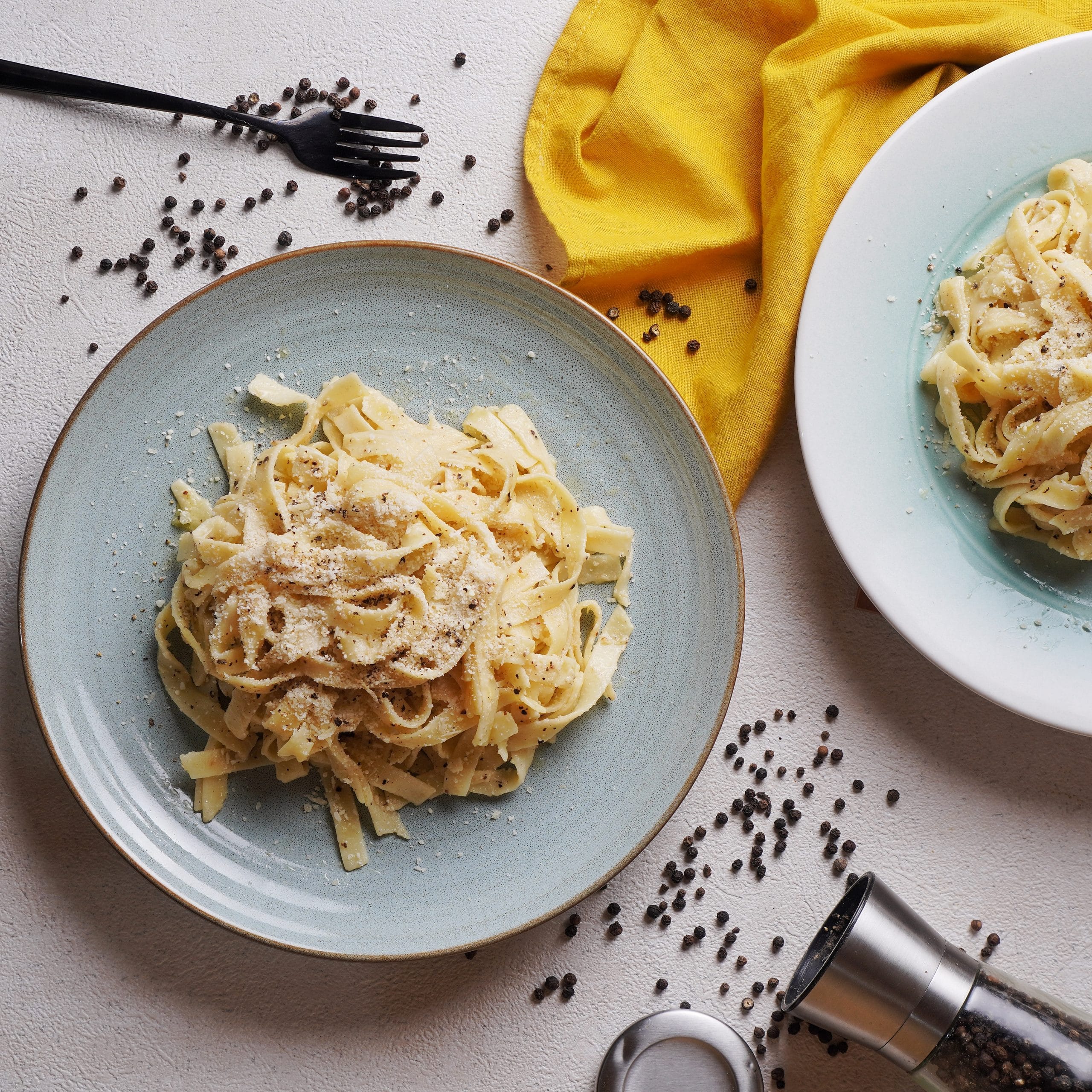
Ingredients
- 1 pound bavette pasta
- 2 Tbsp kosher salt
- 3 Tbsp extra virgin olive oil + 1 Tbsp more for finishing
- 6 Tbsp butter
- 2 ½ Tbsp freshly ground black pepper + 1 tsp for serving
- 1 ½ cups freshly grated Cacio de Roma
- 1 ½ cups freshly grated Pecorino Romano plus extra for serving
Instructions
- All ingredients ready? Let's begin!
- In a large pot over high heat, bring 6 quarts of water and 2 tablespoons of salt to a boil. Drop the pasta into the boiling water and reduce the heat so the water is at a rolling simmer. Cook according to the directions on the packaging minus one minute of time.
- Into a large sauté pan or skillet over low heat, add 3 tablespoons of olive oil and the butter. Heat until the butter just melts, then turn off the heat.
- Once the pasta is about one minute short of the package directions for slightly al dente, turn the heat back on to medium under the sauté pan. Take 2 ladles of pasta cooking water and add it to the oil and butter in the sauté. Allow this to come to a rolling boil.
- Add a small handful of each of the cheeses and allow that to melt into the sauce.
- Using tongs or a spider, remove the noodles from the pot into the sauté pan. Add the pepper and toss to coat everything with tongs or spoons. Add 1 or 2 more ladles of the pasta water and toss again.
- Add the rest of the cheese, except what is being reserved for finishing the dish, and turn off the heat.
- Toss really well. Drizzle with the last tablespoon of olive oil over the pasta. Keep tossing well while you add another ladle of pasta water until a thick sauce forms and coats all the pasta.
- Serve while warm with additional cheese and 1 teaspoon of pepper on top.
Video
Nutrition
Cacio e Pepe is deeply rooted in ancient Italian cuisine. The origins are reportedly based in Roman times when sheep would roam the hills in spring and summer. The shepherds who tended to the sheep roamed with them to keep the herds together.
Apparently, the shepherds brought with them homemade dried pasta. They also carried peppercorns because both stored and traveled well. For meals, they would use the cheese that was made with the milk from the sheep. The pasta was boiled and then coated with a sauce made from the cheese, pasta water, and crushed peppercorns. This was substantial and provided the shepherds with calories and energy to spend the day walking the hills of the Apennine Mountains while the sheep grazed.
There is a little debate about what pasta was used in the dish. Famed chef, Lidia Bastianich, is fairly certain the pasta would have been tonnarelli. Basically, tonnarelli is a square spaghetti. Modern Italian cuisine uses bavette for this simple, yet elegant, dish. Similar to spaghetti but with a flatter, slightly convex cross-section, bavette hails from Genoa.
Cacio de Roma (Roman cheese) is a sheep’s milk cheese that is formed into a ball and aged for about one month. It is semi-soft, mild in flavor, and perfect for making a pasta sauce.
The basic and original cacio e pepe recipe would not have had any fat other than that from the cheese. To help the sauce have some structure so that it adheres to the pasta, the pasta cooking water is added to the cheese. Modern Italian recipes for this dish often include olive and butter to add richness and a creamier texture to the cheese and pepper sauce. I really can’t argue with that.
This recipe for bavette cacio e pepe definitely includes some unctuous fat in the form of good olive oil and butter. My preference is cultured butter. The ingredients are simple and affordable in this dish, so splurge a little and get a high-quality extra virgin olive oil, pastured and cultured butter, and whole peppercorns that you grind yourself.
Notes & Tips
- The beauty of this recipe is that it is pure and simple. There is no need to overthink it. Don’t be tempted to add cream to the sauce. The pasta cooking liquid will add texture and silkiness. Also, don’t add herbs to the finished dish. The speckled pepper is one of the stars of the dish.
- Do season your pasta cooking water generously with salt. This is where much of the seasoning will come from in the final dish.
- I was lucky enough to spend the weekend recently with someone who used to be the pasta chef at Lupa in NYC where bavette cacio e pepe was always on the menu. I asked her if there was any secret to the dish. She told me that in addition to the pasta water being the key ingredient, it is essential to vigorously, yet thoughtfully, toss the pasta in the water and dairy sauce so everything becomes creamy and sticks to the bavette. She described it as almost like whipping the sauce as you make it.
Substitutions
Cacio e Pepe has a little bit of leeway when it comes to the pasta. If you can’t find bavette, you can substitute tagliatelle or linguini fine. In a pinch, spaghetti will work. If you are gluten-free, try 100% brown rice spaghetti or linguini. It is starchy and sturdy.
Cacio de Roma and Pecorino Romana are the preferred cheeses. You could use Grana Padano and Pecorino Romana if you can’t find Cacio de Roma.
The pasta chef I spoke to mentioned that butter was usually the only fat used at her restaurant, no olive oil. This makes the dish really creamy and rich. I love good olive oil, so I like the flavor it adds.

